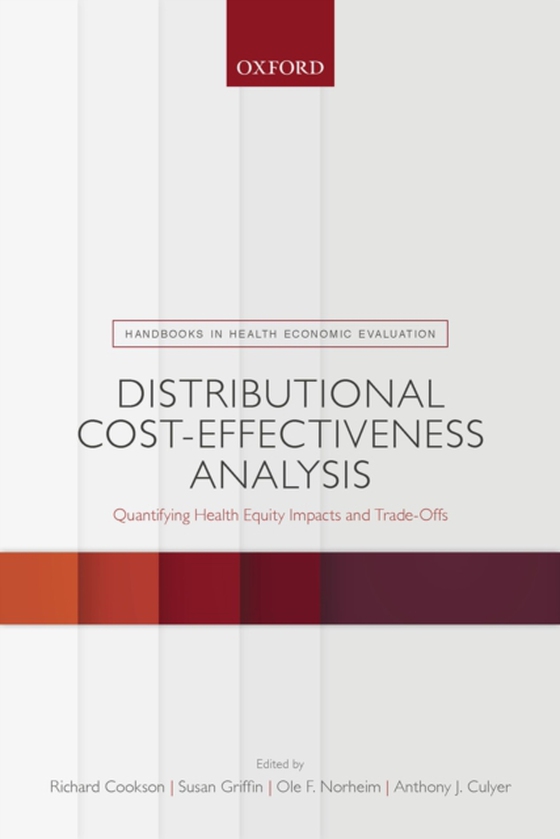
Distributional Cost-Effectiveness Analysis e-bog
412,44 DKK
(ekskl. moms 329,95 DKK)
Distributional cost-effectiveness analysis aims to help health care and public health organisations make fairer decisions with better outcomes. Whereas standard cost-effectiveness analysis provides information about total costs and effects, distributional cost-effectiveness analysis provides additional information about fairness in the distribution of costs and effects - who gains, who loses, ...
E-bog
412,44 DKK
Forlag
OUP Oxford
Udgivet
30 september 2020
Længde
368 sider
Genrer
KCQ
Sprog
English
Format
epub
Beskyttelse
LCP
ISBN
9780192575296
Distributional cost-effectiveness analysis aims to help health care and public health organisations make fairer decisions with better outcomes. Whereas standard cost-effectiveness analysis provides information about total costs and effects, distributional cost-effectiveness analysis provides additional information about fairness in the distribution of costs and effects - who gains, who loses, and by how much. It can also provide information about the trade-offsthat sometimes occur between efficiency objectives, such as improving total health, and equity objectives, such as reducing unfair inequality in health. This is a practical guide to a flexible suite of economic methods for quantifying the equity consequences of health programmes in high-, middle- and low-income countries. The methods can be tailored and combined in various ways to provide useful information to different decision-makers in different countries with different distributional equity concerns. The handbook is primarily aimed at postgraduate students and analysts specialising in cost-effectiveness analysis but is also accessible toa broader audience of health sector academics, practitioners, managers, policymakers and stakeholders. As well as offering an overview for research commissioners, users, and producers, the book includes systematic technical guidance on how to simulate and evaluate distributions, with accompanying hands-on spreadsheet training exercises, and discussions about how to handle uncertainty about facts and disagreement about values, and the future challenges facing this young and rapidly evolving field of study.
 Dansk
Dansk

